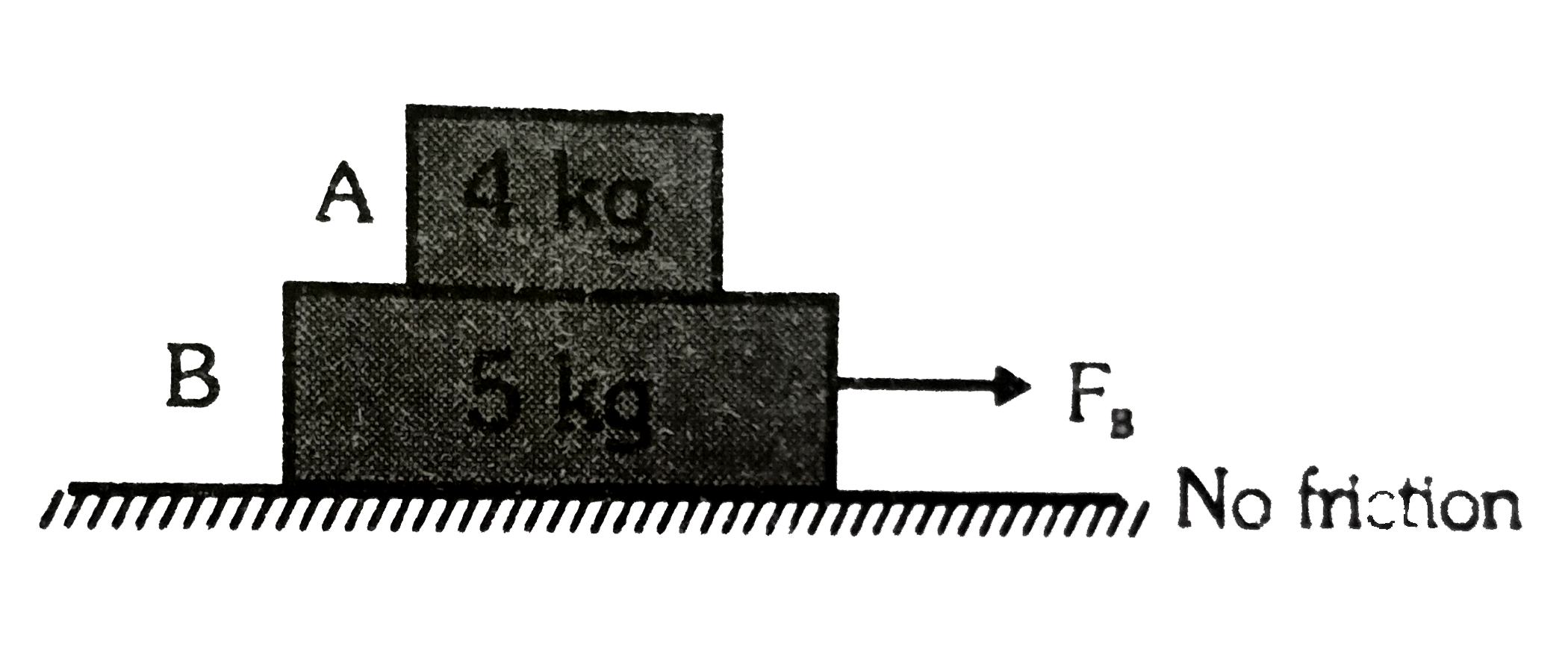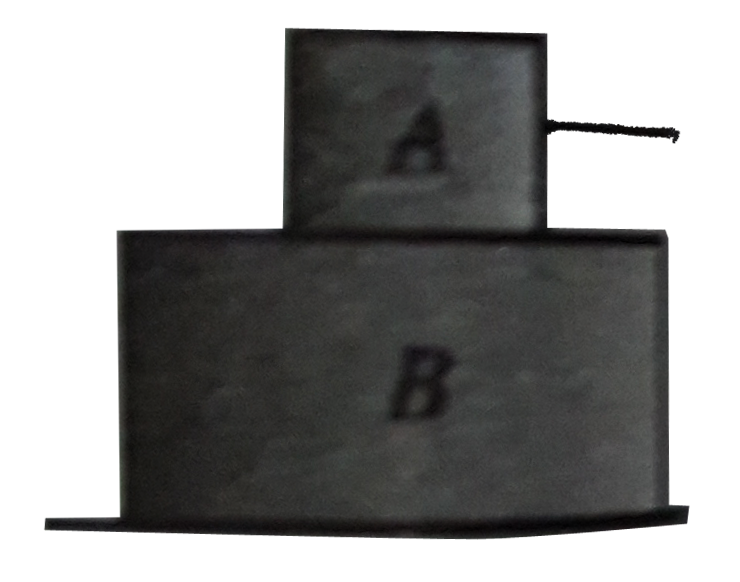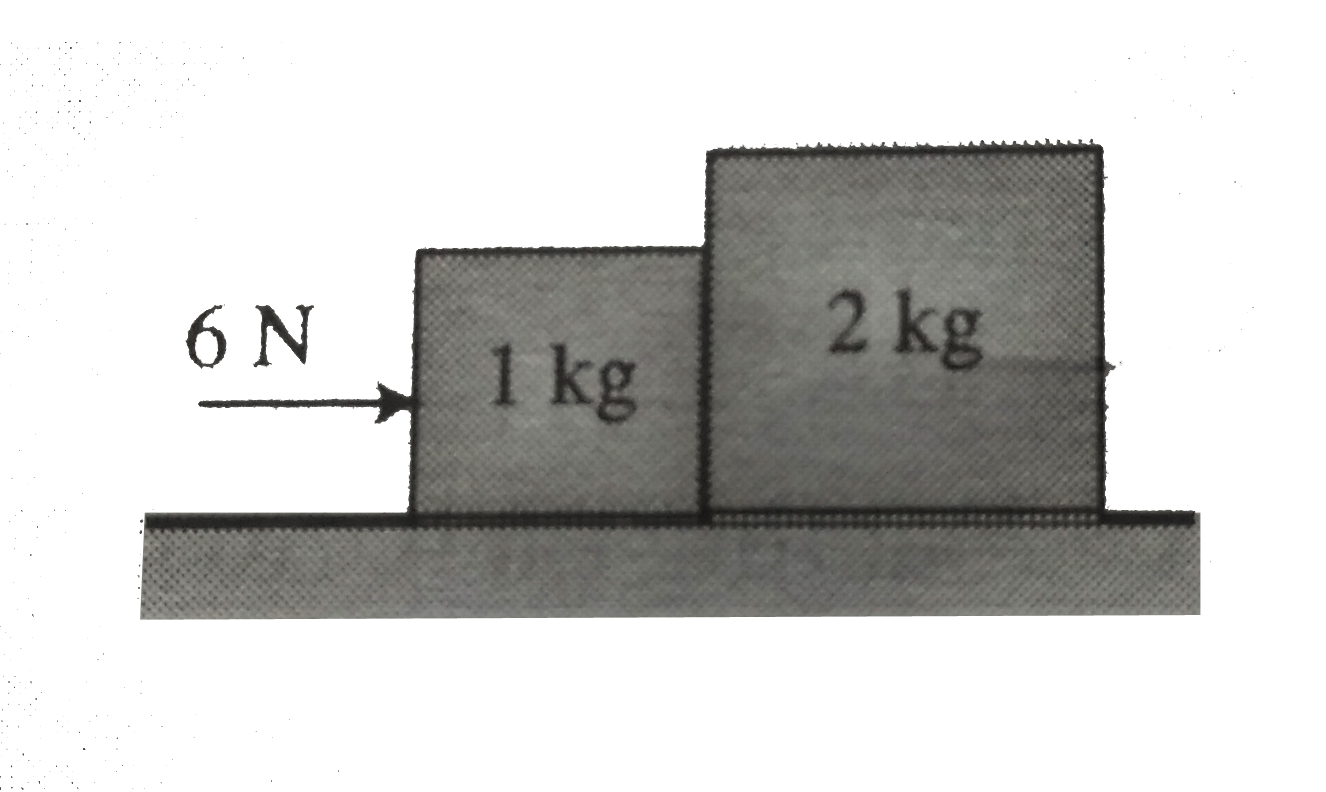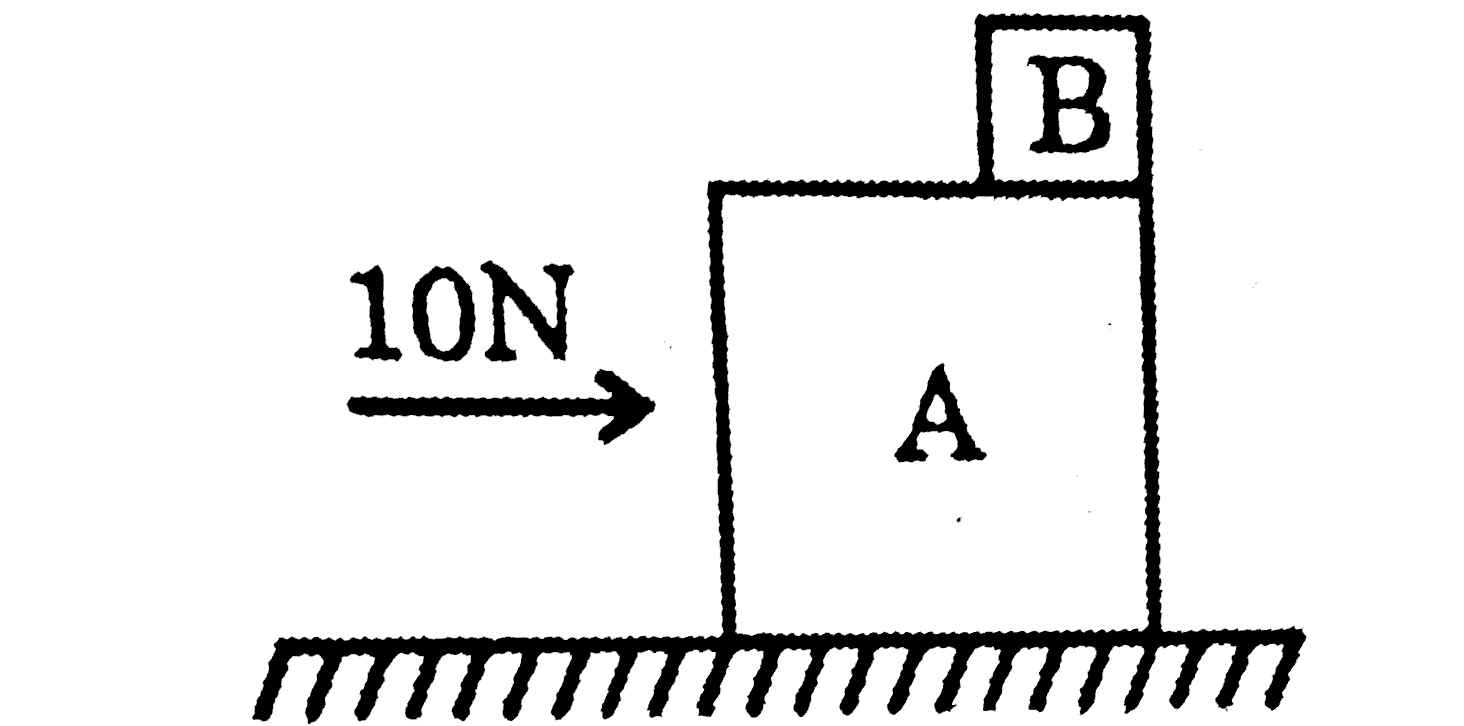A block A of mass 4 kg is placed on another block B of mass 5 kg , and the block B rests on a smooth horizontal table . For sliding block A on B , a horizontal force of 12 N is required to be applied on A How much maximum force can be applied on B so that both A and B move togrther ? Also find out acceleration produced by this force .
To solve the problem step by step, we will analyze the forces acting on both blocks A and B and determine the maximum force that can be applied to block B so that both blocks move together.
1. Identify the Masses:
- Mass of block A (m_A) = 4 kg
- Mass of block B (m_B) = 5 kg
2. Determine the Force Required for Sliding:
- The horizontal force required to slide block A on block B is given as 12 N. This force is equal to the maximum static friction force between the two blocks.
3. Calculate the Normal Force on Block A:
- The normal force (N) acting on block A due to its weight is:
N=mA⋅g=4kg⋅9.8m/s2=39.2N≈40N
- Here, we approximate g as 10m/s2 for simplicity, so N≈40N.
4. Relate the Frictional Force to the Coefficient of Friction:
- The maximum static friction force (f_max) can be expressed as:
fmax=μ⋅N
- Since f_max = 12 N (the force required to slide A), we can set up the equation:
12N=μ⋅40N
- From this, we can find the coefficient of friction (μ):
μ=1240=0.3
5. Determine the Maximum Force on Block B:
- For both blocks to move together, the friction force must equal the force needed to accelerate block A. The total mass of both blocks is:
mtotal=mA+mB=4kg+5kg=9kg
- The force (F_B) applied on block B must overcome the friction force and provide acceleration. The equation for the force on block B is:
FB=mB⋅a+fmax
6. Calculate the Acceleration:
- The acceleration (a) can be determined from the friction force acting on block A:
fmax=mA⋅a⟹12N=4kg⋅a⟹a=124=3m/s2
7. Substitute the Acceleration into the Force Equation:
- Now substituting a=3m/s2 into the force equation for block B:
FB=5kg⋅3m/s2+12N=15N+12N=27N
Final Answers:
- The maximum force that can be applied on block B so that both blocks move together is 27 N.
- The acceleration produced by this force is 3 m/s².
- Mass of block A (m_A) = 4 kg
- Mass of block B (m_B) = 5 kg
- The horizontal force required to slide block A on block B is given as 12 N. This force is equal to the maximum static friction force between the two blocks.
- The normal force (N) acting on block A due to its weight is:
N=mA⋅g=4kg⋅9.8m/s2=39.2N≈40N
- Here, we approximate g as 10m/s2 for simplicity, so N≈40N.
- The maximum static friction force (f_max) can be expressed as:
fmax=μ⋅N
- Since f_max = 12 N (the force required to slide A), we can set up the equation:
12N=μ⋅40N
- From this, we can find the coefficient of friction (μ):
μ=1240=0.3
- For both blocks to move together, the friction force must equal the force needed to accelerate block A. The total mass of both blocks is:
mtotal=mA+mB=4kg+5kg=9kg
- The force (F_B) applied on block B must overcome the friction force and provide acceleration. The equation for the force on block B is:
FB=mB⋅a+fmax
- The acceleration (a) can be determined from the friction force acting on block A:
fmax=mA⋅a⟹12N=4kg⋅a⟹a=124=3m/s2
- Now substituting a=3m/s2 into the force equation for block B:
FB=5kg⋅3m/s2+12N=15N+12N=27N
- The maximum force that can be applied on block B so that both blocks move together is 27 N.
- The acceleration produced by this force is 3 m/s².
Similar Questions
12N of force required to be applied on A to slip on B. Find the maximum horizontal force F to be applied on B so that A and B moves together.

View SolutionA 4 kg block A is placed on the top of 8 kg block B which rests on a smooth table.

A just slips on B when a force of 12 N is applied on A. Then the maximum horizontal force F applied on B to make both A and B move together, is
View Solution
Knowledge Check
A block A of mass 4 kg is placed on another block B of mass 5 kg and the block rests on a smooth horizontal table. For sliding the block A on B, a horizontal force of 12 N is required to be applied on it. The maximum horizontal force that can be applied on B so that both A and B move together and the acceleration produced by this force is
 A25 N, 5 m/s2B27 N, 3 m/s2C30 N, 8 m/s2Dcannot be calculated from the given data.
A25 N, 5 m/s2B27 N, 3 m/s2C30 N, 8 m/s2Dcannot be calculated from the given data.
A block A of mass 2kg is placed over smooth block B of mass 4kg which is placed over a smooth horizontal floor The coefficient of friction between A and B is 0.4 when a horizontal forces of magnitude 10N is applied on A the acceleration of block of A and B are

View SolutionTwo blocks of masses 1 kg and 2 kg are placed in contact on a smooth horizontal surface as shown in fig. A horizontal force of 6N is applied d(a) on a 1-kg block. Find the force of interaction of the blocks.

 .
.
View SolutionA small block B is placed on another block A of mass 5 kg and length 20 cm. Initially, the block B is near the right end of block A. A constant horizontal force of 10 N is applied to the block A. All the surfaces are assumed frictionless. Find the time elapsed before the block B separates from A.

View SolutionTwo block A and B of masses 5 kg. and 3 kg. respectively rest on smooth horizontal surface with B over A. The coefficient of friction between A and B. 0.5 the maximum horizontal force that can be applied to A so that there will be motion of A and B without separation is :-
View SolutionBlock A of mass 1kg is placed on the rough surface of block B of mass 3kg. Block B is placed on smooth horizontal surface. Blocks are given the velocities as shown. Find net work done by the frictional force. [in (−)veJ].
 .
.
View SolutionThree blocks of masses 3kg,2kg and 1kg are placed side by side on a smooth surface as shown in figure. A horizontal force of 12N is applied on 3kg block. Find the net force on 2kg block.

View SolutionThree blocks of masses 3kg,2kg and 1kg are placed side by side on a smooth surface as shown in figure. A horizontal force of 12N is applied on 3kg block. Find the net force on 2kg block.

View Solution
